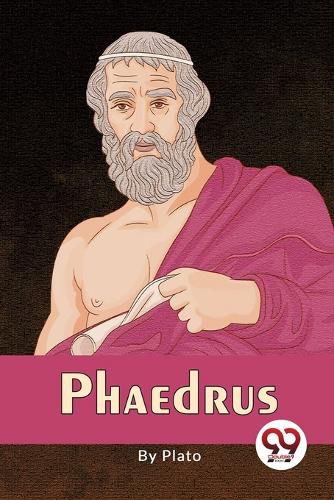Readings Newsletter
Become a Readings Member to make your shopping experience even easier.
Sign in or sign up for free!
You’re not far away from qualifying for FREE standard shipping within Australia
You’ve qualified for FREE standard shipping within Australia
The cart is loading…






This title is printed to order. This book may have been self-published. If so, we cannot guarantee the quality of the content. In the main most books will have gone through the editing process however some may not. We therefore suggest that you be aware of this before ordering this book. If in doubt check either the author or publisher’s details as we are unable to accept any returns unless they are faulty. Please contact us if you have any questions.
Socrates and Phaedrus, an interlocutor in multiple dialogues, engage in a conversation in Plato's work The Phaedrus. Like Plato's Republic and Symposium, The Phaedrus was probably written around 370 BCE. Although the dialogue is apparently about the subject of love, it actually focuses on the art of rhetoric and how it should be used, as well as topics as varied as metempsychosis (the Greek belief in reincarnation) and sensual love. The classic Chariot Allegory, which depicts the human soul as consisting of a charioteer, a good horse heading upward to the divine, and a bad horse tending downhill to a material incarnation, is one of the dialogue's key passages. Unusually, the dialogue doesn't establish itself as a recounting of the day's events. The dialogue is presented in the straight, unmediated words of Socrates and Phaedrus; there are no intermediaries to set up the discussion or provide background information; it is delivered firsthand, as though we are present for the actual occurrences. This contrasts with dialogues like the Symposium, in which Plato openly provides us with a partial, fifth-hand account of the day's events by creating a number of layers between them and what we hear about them.
$9.00 standard shipping within Australia
FREE standard shipping within Australia for orders over $100.00
Express & International shipping calculated at checkout
This title is printed to order. This book may have been self-published. If so, we cannot guarantee the quality of the content. In the main most books will have gone through the editing process however some may not. We therefore suggest that you be aware of this before ordering this book. If in doubt check either the author or publisher’s details as we are unable to accept any returns unless they are faulty. Please contact us if you have any questions.
Socrates and Phaedrus, an interlocutor in multiple dialogues, engage in a conversation in Plato's work The Phaedrus. Like Plato's Republic and Symposium, The Phaedrus was probably written around 370 BCE. Although the dialogue is apparently about the subject of love, it actually focuses on the art of rhetoric and how it should be used, as well as topics as varied as metempsychosis (the Greek belief in reincarnation) and sensual love. The classic Chariot Allegory, which depicts the human soul as consisting of a charioteer, a good horse heading upward to the divine, and a bad horse tending downhill to a material incarnation, is one of the dialogue's key passages. Unusually, the dialogue doesn't establish itself as a recounting of the day's events. The dialogue is presented in the straight, unmediated words of Socrates and Phaedrus; there are no intermediaries to set up the discussion or provide background information; it is delivered firsthand, as though we are present for the actual occurrences. This contrasts with dialogues like the Symposium, in which Plato openly provides us with a partial, fifth-hand account of the day's events by creating a number of layers between them and what we hear about them.